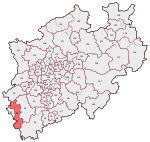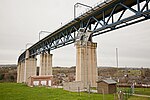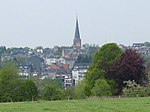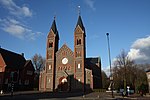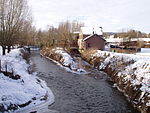Plombières
Liège geography stubsMunicipalities of Liège ProvincePlombières

Plombières (French pronunciation: [plɔ̃bjɛʁ]; German: Bleyberg or Bleiberg, Dutch: Blieberg; Walloon: So-on-Mont-d'-Plomb) is a municipality of Wallonia located in the province of Liège, Belgium. On 1 January 2006, Plombières had a total population of 10,401. The total area is 53.17 km2 which gives a population density of 200 inhabitants per km2.The municipality consists of the following districts: Gemmenich, Hombourg, Montzen, Moresnet, and Sippenaeken.The local language is Low Dietsch, a bridge dialect between East Limburgish and Ripuarian.
Excerpt from the Wikipedia article Plombières (License: CC BY-SA 3.0, Authors, Images).Plombières
RAVeL 38 Plombières Hombourg,
Geographical coordinates (GPS) Address Nearby Places Show on map
Geographical coordinates (GPS)
| Latitude | Longitude |
|---|---|
| N 50.733333333333 ° | E 5.95 ° |
Address
RAVeL 38 Plombières Hombourg
RAVeL 38 Plombières Hombourg
4581
Liège, Belgium
Open on Google Maps
